Blog Archives
Frontiers of Learning – The Bahá’í Faith
As Baha’is around the world celebrated the last day of Ridvan and the Baha’i world witnessed the election of the Universal House of Justice, the Baha’i World Centre has just released a wonderful new film entitled Frontiers of Learning.
This uplifting film captures the insights and experiences of four different communities on four different continents. In these communities, children, junior youth, youth, and adults are all taking part in a process of community building based on concepts enshrined in the Baha’i Teachings.
Filmed in Canada, Colombia, India, and the Democratic Republic of the Congo, Frontiers of Learning is divided into four main parts and it is approximately 90 minutes in length. The film also has subtitles in 5 different languages, and you can either stream or download the film for free.
– See more at: http://bahaiblog.net/site/2013/05/frontiers-of-learning-new-film-from-the-bahai-world-centre/#sthash.y7tn9AGW.dpuf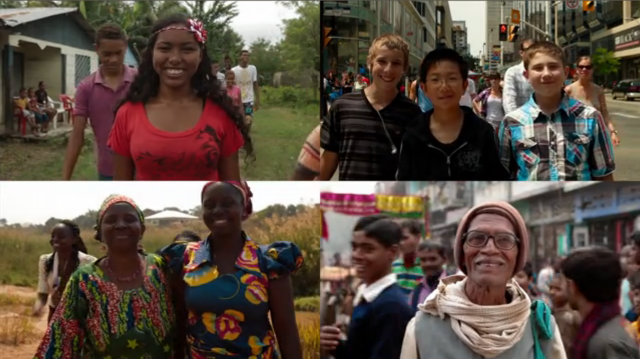
Muhammad: Legacy of a Prophet
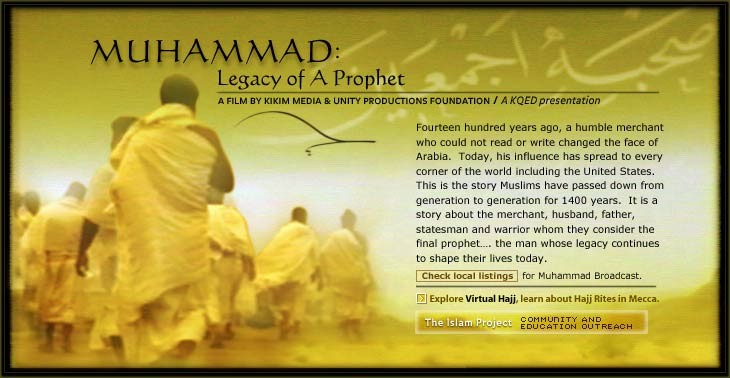 This is the story of the man who changed the world in 23 years and continues to influence it today. His father died before he was born, and his mother died when he was only six. Sheltered by a powerful uncle, he made a good start in life, established himself in a profitable business and married well. Then, at the age of 40, he was transformed. A man who could not read or write, he announced that he was the prophet of God. His name was Muhammad, and in the next 23 years he would bring peace to the warring pagan tribes of Arabia and establish the religion of Islam, which today has 1.2 billion followers.
This is the story of the man who changed the world in 23 years and continues to influence it today. His father died before he was born, and his mother died when he was only six. Sheltered by a powerful uncle, he made a good start in life, established himself in a profitable business and married well. Then, at the age of 40, he was transformed. A man who could not read or write, he announced that he was the prophet of God. His name was Muhammad, and in the next 23 years he would bring peace to the warring pagan tribes of Arabia and establish the religion of Islam, which today has 1.2 billion followers.
Three years in the making, “Muhammad: Legacy of a Prophet,” travels in the footsteps of the prophet to the Arabian desert and the holy city of Mecca where much of Muhammad’s story unfolded. But the film does not just stay in the past. Much of it’s story is told through the observations of contemporary American Muslims, including a fireman at the World Trade Center on September 11, 2001 a second generation Arab-American family building a community based on Islamic principles, a Congressional Chief of Staff working for justice, and a refugee fleeing religious persecution, whose experiences in some way echo Muhammad’s life. With some of the world’s greatest scholars on Islam providing historical context and critical perspective, “Muhammad: Legacy of a Prophet” is history in the present tense. It tells of intrigue and faith, bitter persecution and the birth of a holy book, brutal war and brilliant diplomacy in a desert environment where tribal allegiance was often the only protection.
His father died before he was born, and his mother died when he was only six. But sheltered by a powerful uncle, he made a good start in life, established himself in a profitable business and married well. And then, at the age of 40, he was transformed.
A man who could not read or write, he announced that he was the prophet of God.
His name was Muhammad, and in the next 23 years he would bring peace to the warring pagan tribes of Arabia and establish the new religion of Islam, which today has 1.2 billion followers.
Three years in the making, Muhammad: Legacy of a Prophet travels in the footsteps of the prophet to the Arabian desert and the holy city of Mecca where much of Muhammad’s story unfolded. “There are six to seven million Muslims here in America, where Islam is the country’s fastest growing religion, but many Americans are completely unfamiliar with the life story of the remarkable man who founded this religion 1400 years ago,” says producer/director Michael Schwarz.
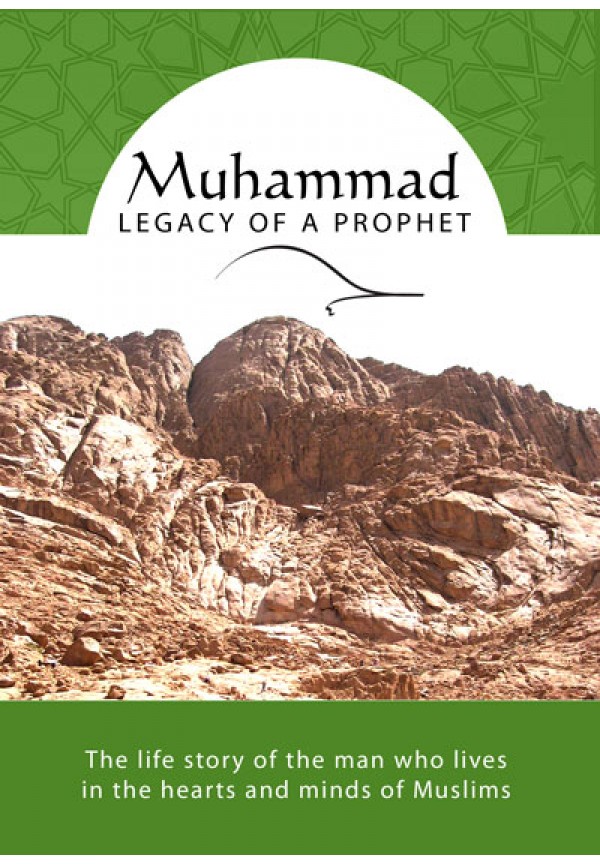 This sweeping two-hour documentary goes well beyond the boundaries of the past. “Muhammad is ‘history in the present tense,'” says co-creator/producer Michael Wolfe, a well-known Muslim author. “In it, we reflect on this 7th century story through the experiences of 21st century Americans who feel deeply connected to what Muhammad did, said and believed.” A presentation of KQED/San Francisco, the documentary is produced by Kikim Media and Unity Productions Foundation. Muhammad: Legacy of a Prophet was created and produced by Michael Wolfe and Alexander Kronemer, and produced and directed by Michael Schwarz. Noted actor André Braugher is the narrator. With some of the world’s greatest scholars on Islam providing historical context and critical perspective, Muhammad: Legacy of a Prophet tells of intrigue and faith, revolutionary ideas and bitter persecution, brutal war and brilliant diplomacy in an arid desert where tribal allegiance was often the only protection. Muhammad was orphaned as a child, but he was fortunate to be born into the powerful tribe of the Quraysh in the city of Mecca, a regional pilgrimage site and commercial crossroads. He became a successful trader based in this cosmopolitan center and married a woman who was a wealthy merchant. Yet as Muhammad prospered with the city, he saw that the poor were increasingly neglected and hedonism dominated the culture.
This sweeping two-hour documentary goes well beyond the boundaries of the past. “Muhammad is ‘history in the present tense,'” says co-creator/producer Michael Wolfe, a well-known Muslim author. “In it, we reflect on this 7th century story through the experiences of 21st century Americans who feel deeply connected to what Muhammad did, said and believed.” A presentation of KQED/San Francisco, the documentary is produced by Kikim Media and Unity Productions Foundation. Muhammad: Legacy of a Prophet was created and produced by Michael Wolfe and Alexander Kronemer, and produced and directed by Michael Schwarz. Noted actor André Braugher is the narrator. With some of the world’s greatest scholars on Islam providing historical context and critical perspective, Muhammad: Legacy of a Prophet tells of intrigue and faith, revolutionary ideas and bitter persecution, brutal war and brilliant diplomacy in an arid desert where tribal allegiance was often the only protection. Muhammad was orphaned as a child, but he was fortunate to be born into the powerful tribe of the Quraysh in the city of Mecca, a regional pilgrimage site and commercial crossroads. He became a successful trader based in this cosmopolitan center and married a woman who was a wealthy merchant. Yet as Muhammad prospered with the city, he saw that the poor were increasingly neglected and hedonism dominated the culture.
One day in the desert, while meditating in a mountain cave, Muhammad was struck by a revelation that changed his life and the world. Terrified by the force of the experience, he began to recite words that came to him, words he said were from God. These messages would continue throughout the rest of his life. Unable to write them, he would repeat them to his growing band of followers until they became part of their collective memory. Slowly these revelations began to form the book we now know as the Qur’an (or Koran). While people were shocked by these claims, “they acquired credibility because of the very nature of the words spoken,” says M. Cherif Bassiouni, professor of law at DePaul University. How could an illiterate man make up language of such poetry and wisdom?
The new faith and ideas that Muhammad proclaimed as the Word of God, were a threat to the Meccan establishment. Muhammad’s pronouncement that there was only one God, particularly threatened the very livelihood of the rich Meccans who profited from Mecca’s role as Arabia’s most popular pilgrimage center. Through years of harrassment and deprivation, and trading sanctions imposed against his people, Muhammad continued to preach and share revelations with his followers, calling on them to worship one God, to destroy idols and to practice charity. As the community faced growing hostility, he began to encourage Muslims to move across the desert and settle in the oasis town of Yathrib, later called Medina. When word of an assassination plot reached him, Muhammad barely escaped death and managed to join the growing Islamic community in Medina.
“Unlike Jesus or the Buddha, who seem to have been purely spiritual leaders with no temporal responsibilities whatever, Muhammad found himself now head of state,” author Karen Armstrong points out. “Having transferred the Muslim families from Mecca to Medina, he now had to make sure they could survive there.” Muhammad proved to be a strategically gifted military leader and a creative diplomat in the turbulent period that followed. A series of bloody battles between the Meccans and Muhammad’s followers almost destroyed the nascent faith, but then the tide turned. Ultimately Muhammad was able to lead 100,000 Muslims back to Mecca for the Hajj, a pilgrimage that remains a cornerstone of the spiritual life of Muslims.
While recounting the story of Muhammad, a tale that was carefully passed down as oral history in the 7th century and subsequently recorded, the documentary also conveys what many American Muslims believe Islam teaches, and how their beliefs shape their lives. The documentary takes viewers into the homes, mosques and work places of some of America’s Muslims to discover the many ways in which they follow Muhammad’s example and interpret his life and his message today. Through these inter-linked narratives, the filmmakers connect past and present, prophet and follower, within an innovative film structure.” Co-creator/producer Alex Kronemer says, “Many Muslims believe that if you want to understand who they are, the best place to start is with this story of Muhammad, because he established a model of behavior and values which Muslims strive to emulate today.”
The American Muslims that the documentary introduces include recent immigrants, Muslims whose families have lived here for generations, and American converts like Kevin James, a Brooklyn fire marshal, who has a Jewish mother and a father who is Native American and African American.
“America is a racial nation,” says James. “Either you’re Black, you’re White, you’re Italian, you’re Jewish, you’re this, you’re that. So coming from a mixed background, I’ve felt like, kind of in limbo.” After a period of spiritual seeking, James discovered a kinship with Islam, in part because it shares religious roots with both Judaism and Christianity and in part because it preaches racial equity. His faith inspired his decision to become a firefighter he explains, “The Qur’an teaches you that the saving of one life is as if you’ve saved all of humanity.”
A critical care nurse, Najah Bazzy is a second generation Muslim American who lives in Dearborn, Michigan. Her hometown has seen a massive influx of Muslim immigration as a result of the Gulf War. As she helps her colleagues understand and work effectively with their Muslim patients and her husband negotiate life with a teenage daughter, Bazzy says that Muhammad is her constant guide. “We live our lives through his examples, but he’s not God,” she explains. “Our reverence is to God. And our reference is to [Muhammad]. So how I walk, and how I speak, and how I carry myself, and how I treat my husband, and how I treat my mother and my father, and how I behave as a sister and a daughter and a nurse and a friend and a neighbor, that’s all prophet Muhammad in action.”
Although this documentary was well into production prior to 9/11, some of the American Muslim characters who help tell Muhammad’s story were filmed after the attack. These sequences portray their reaction to this event, the aftermath they have experienced, and the controversial concept of jihad. Through a combination of commentary from Islamic experts and interviews with Muslim Americans, the program also addresses some of the difficult issues at the matrix of religious faith, cultural customs and Middle East politics, including women’s rights and charges of anti-Semitism rooted in the historical conflicts of the 7th century.
Meet the Mormons
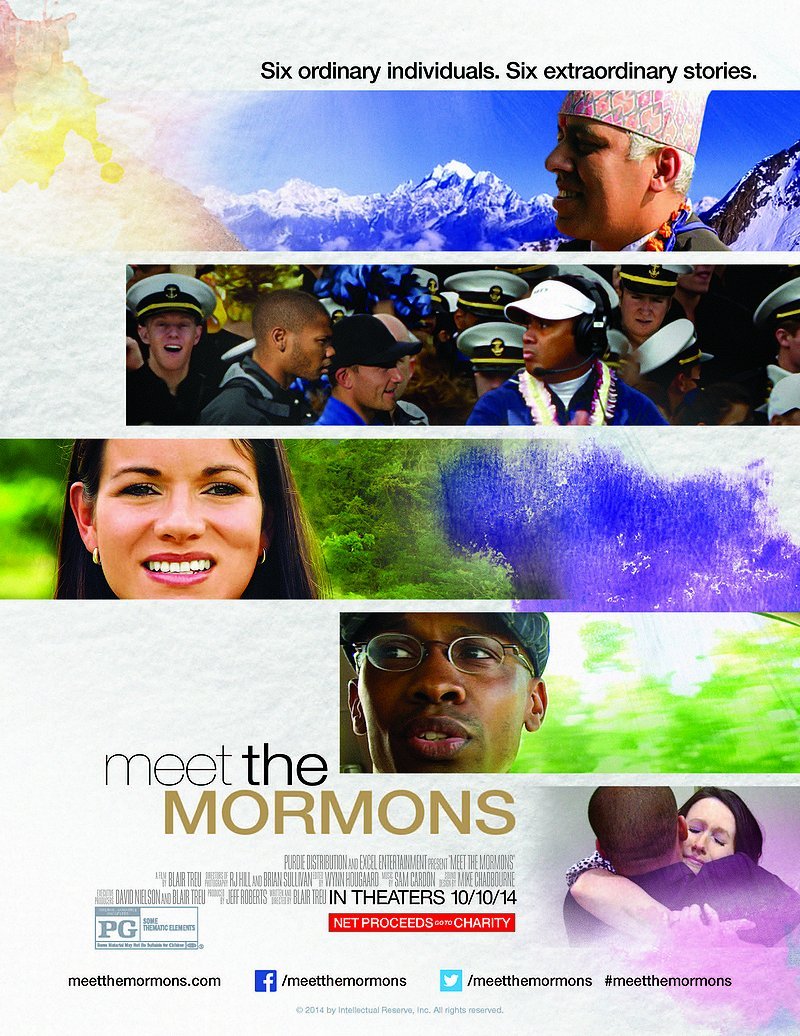
Meet the Mormons is a 2014 American documentary film directed by Blair Treu and produced by The Church of Jesus Christ of Latter-day Saints (LDS Church). The film documents the lives of six devout Mormons living in the United States, Costa Rica, and Nepal. The LDS Church donated all net proceeds from the theatrical release of film to the American Red Cross.
The film features Jermaine Sullivan, “The Bishop”, and his family. Sullivan is an African-American who is an academic counselor at the University of Phoenix. He was bishop of a ward in Atlanta, Georgia when the film was made, and now serves as a stake president.[5][6] The film also covers Sullivan’s wife and children. Darius Gray was among the associates of Sullivan interviewed.
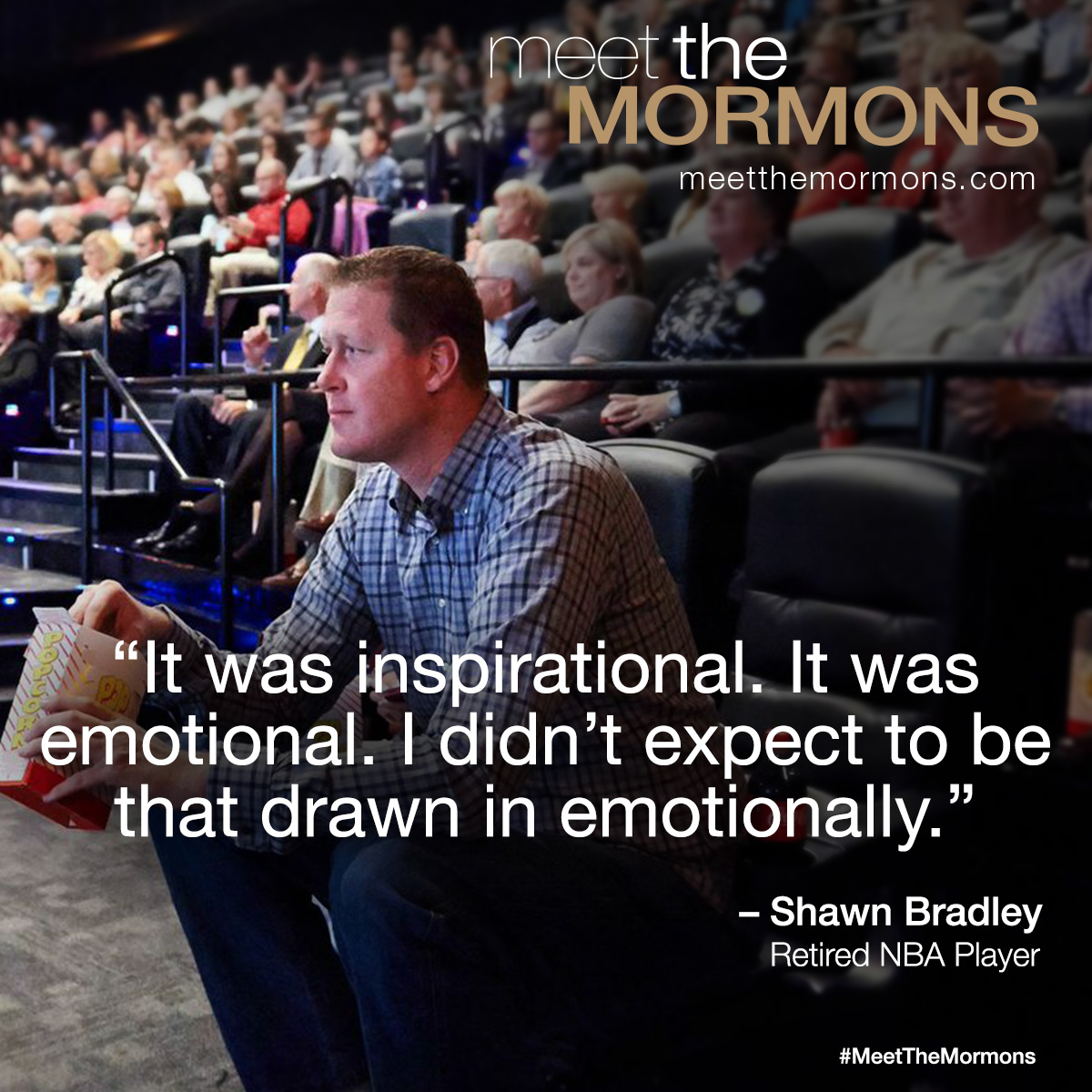
“The Coach”, Ken Niumatalolo, head football coach at the United States Naval Academy.
“The Fighter”, Carolina Muñoz Marin, an MMA fighter from Costa Rica who had a chance to go pro international, but she and her husband decided it would separate their family too much.[7]
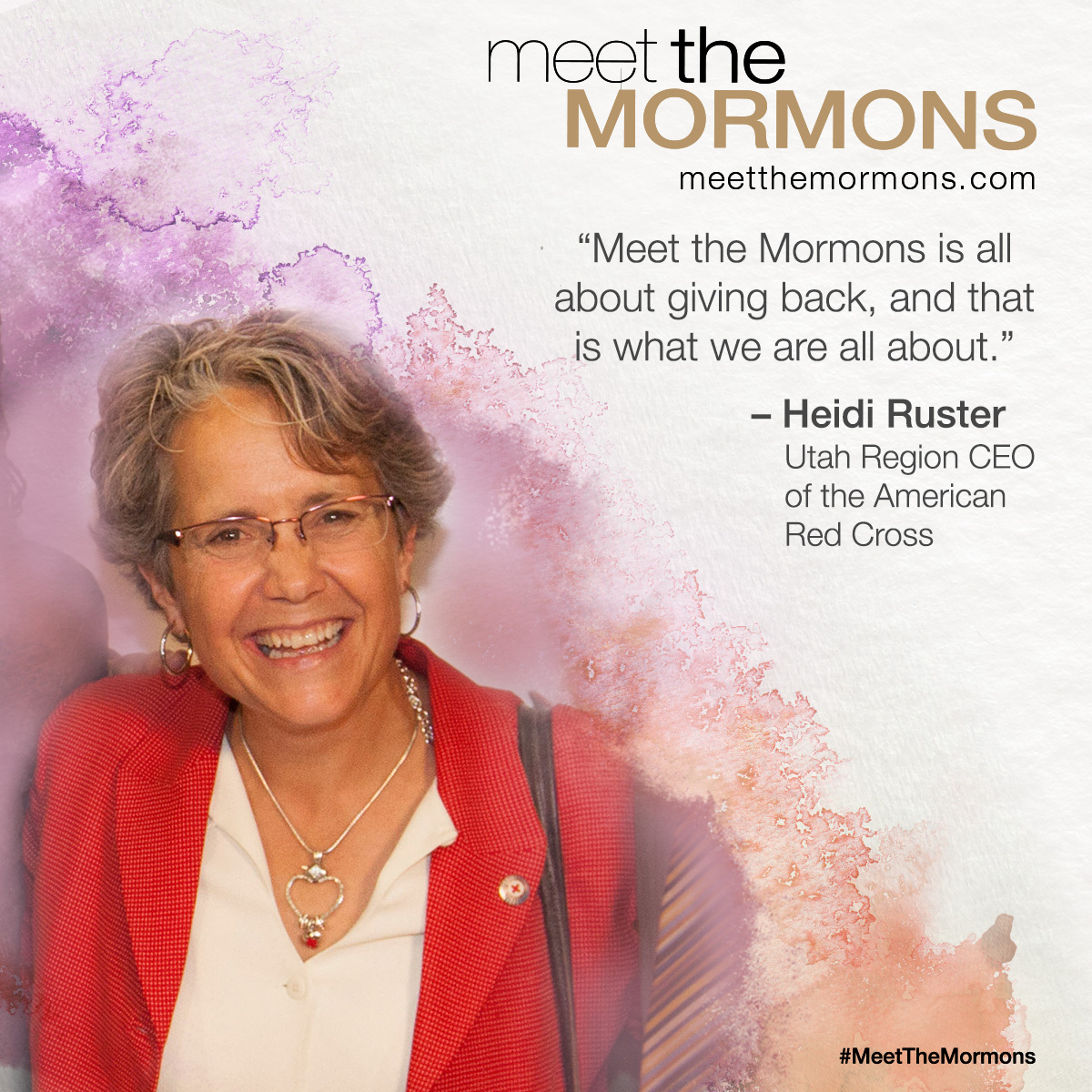
“The Humanitarian”, Bishnu Adhikari, a man from Nepal, with a degree in engineering who is the country director for Choice Humanitarian in Nepal. The organization works to improve the living situation in rural parts of Nepal.[8][9][10]
“The Candy Bomber”, Gail Halvorsen.
“The Missionary Mom”, Dawn Armstrong, her story is chronicled from the birth of a son when she was a teenager, abandonment by his biological father, meeting her current husband – who had both her oldest son and her deceased next oldest son sealed to him when they were married in the temple, to her oldest son leaving to serve as a mission.[11]

Jerusalem: Within These Walls
Through the years, Jerusalem has drawn mankind to itself like a magnet. Thousands have left their countries and cultures seeking the ancient promise of peace. The pull is so strong that people have taken great personal and financial risks to get behind its walls. And it’s all because Jerusalem’s Old City is a tiny territory where some of the world’s greatest dramas have been enacted. It’s the cradle of the world’s three greatest monotheistic religions: Christianity, Judaism, and Islam.
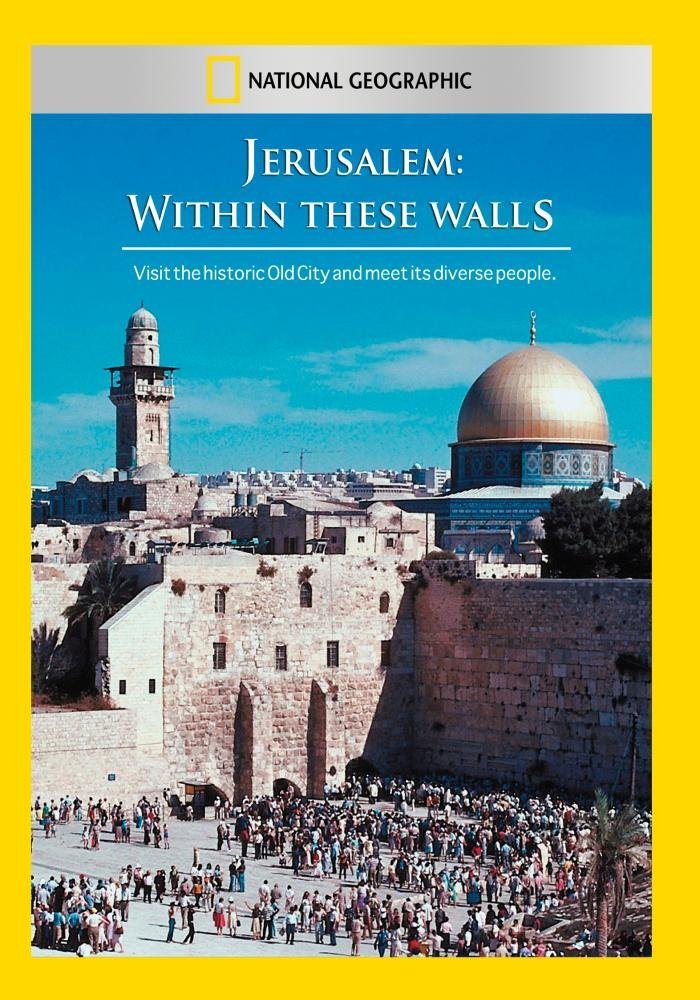
Even though it was not always the case, today each group embraces its traditions and is able to freely express devotion. During Ramadan, the Islamic month of fasting, thousands of faithful journey to the Old City from near and far, Jews from more than one hundred cultural backgrounds now live in the ancient capital, and the hearts of all Christians are filled with peace at the mere mention of Jerusalem. They all feel closer to God there.
This historic city is the site of many of the world’s most venerated shrines and home to 26,000 people of profoundly different cultures who live side by side packed into an area of less than one square mile.
The story began about 3,000 years ago when King David bought the site of a threshing floor in order to build a temple for the Israelites to worship. This location became the capital of Judea in the south and Israel in the North. The city of David has now begun to reveal its past to archaeologists— they have even found clay seals that bear the names of people that are mentioned in the Bible.
Throughout its history, Jerusalem has been attacked, ransacked, and burnt to the ground repeatedly. The blood of Jebusites, Babylonians, Jews, Romans, Persians, armies of Arabs, crusaders, Ottoman Turks, and the British Empire have reddened its walls. Yet it continues to stand as the symbol of the soul for one third of the Earth’s population.
JERUSALEM: WITHIN THESE WALLS is an enchanting film that offers a colorful view of this city and its people as they are today. The city of Jerusalem is the remarkable result of over 3,000 years of amazing history and unmovable faith.
